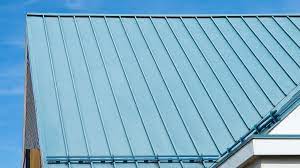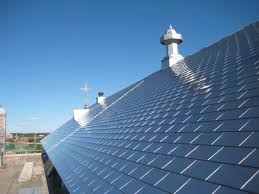
Metal roofs can withstand practically everything Mother Nature can throw at them, which is why they often come with 30- to 50-year guarantees and lifespans of 40 to 70 years. Metal roofs, on the other hand, are not without flaws: Extreme hail or falling trees, as well as inappropriate walking on a metal roof, will damage it. Talk to the manufacturer about your security concerns. Steel, for example, is more challenging than copper, as you’ll discover.
Shingles have a reduced life expectancy owing to their own set of flaws. Algae and fungus may develop in the presence of standing water, ice dams can cause fractures, and temperature swings between day and night can shorten the life of your shingle roof. Shingle roofs have warranties ranging from 15 to 30 years, depending on the area, environment, and temperature.
Initially, shingle roofs were less expensive.
Though a metal roof will last longer, it will cost more when installation. Metal roofs may cost anywhere from $120 to $900 for 100 square feet (one 10-foot by 10-foot space, or a “square”), while asphalt shingles might cost anywhere from $100 to $200 per 100 square feet. Because it’s a more specialist task, its installation will cost you more metal.
You may be able to recuperate some of the expenditures of metal roofing in Malaysia in the future since you won’t have to replace it. Homeowners with metal roofs may also qualify for insurance savings, and installing a metal roof on your principal residence and houses may qualify you for tax incentives. Finally, since metal roofs are highly energy-efficient, you may save money on your monthly heating and cooling bills.

Metal roofs are more environmentally friendly.
Metal roofs are considered a more ecological option than asphalt shingles since they are mainly constructed of recyclable materials and can be recycled repeatedly. Metal roofs are also more energy-efficient due to their reflective characteristics, which may prevent heat from being transferred to the property’s inside. Specialised paint coatings might help you save even more money on your cooling expenditures. On the other hand, asphalt shingles need to be changed more regularly than metal roofs; it’s estimated that approximately 20 billion pounds of old asphalt shingles end up in landfills in the United States each year. Furthermore, since asphalt shingles are made from petroleum, they increase our reliance on fossil fuels.
Roofing made of aluminium
Aluminium roofing is low-maintenance, has a long lifetime, and is available in several colours. Aluminium can not rust and is corrosion-resistant, making it an excellent choice for locations with rain and coastal applications. The exterior layer of aluminium interacts with oxygen in the atmosphere to form aluminium oxide, which effectively shields the metal’s interior layers against further corrosion. It’s more adaptable, allowing for more detailed profiles to be created. However, you’ll need pretty strong gauge metal, particularly in simpler designs, which will raise the price. The lightest roofing material is aluminium.

Compared to heavier materials, a lightweight roof is helpful since it puts less stress on your structure. One of the most significant advantages of an aluminium roof is saving energy. These roofs have the advantage of being easy to install.







